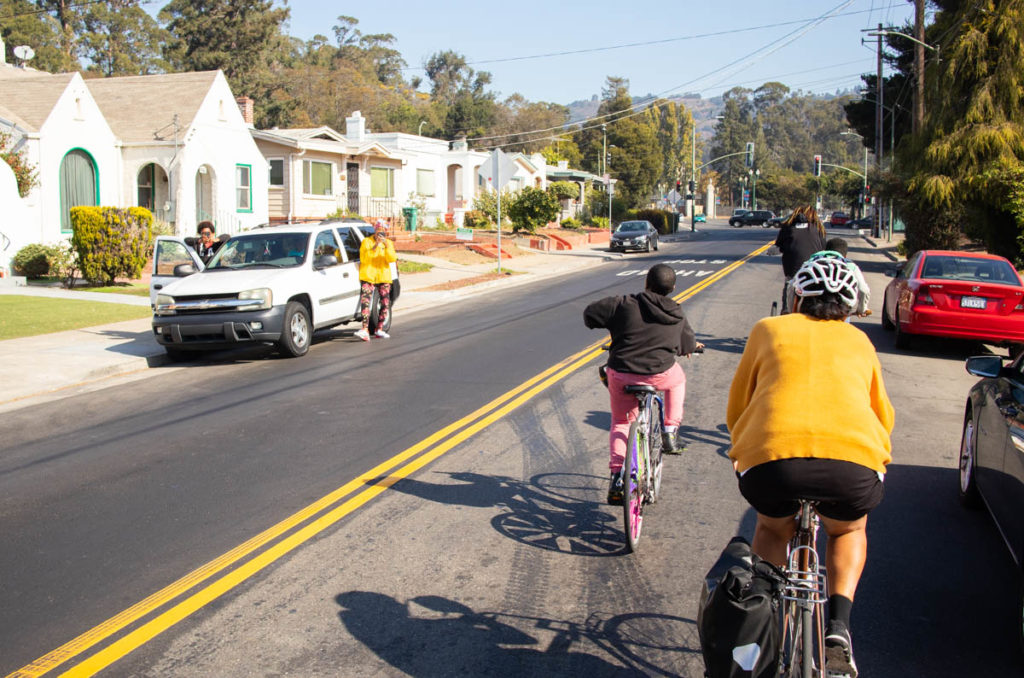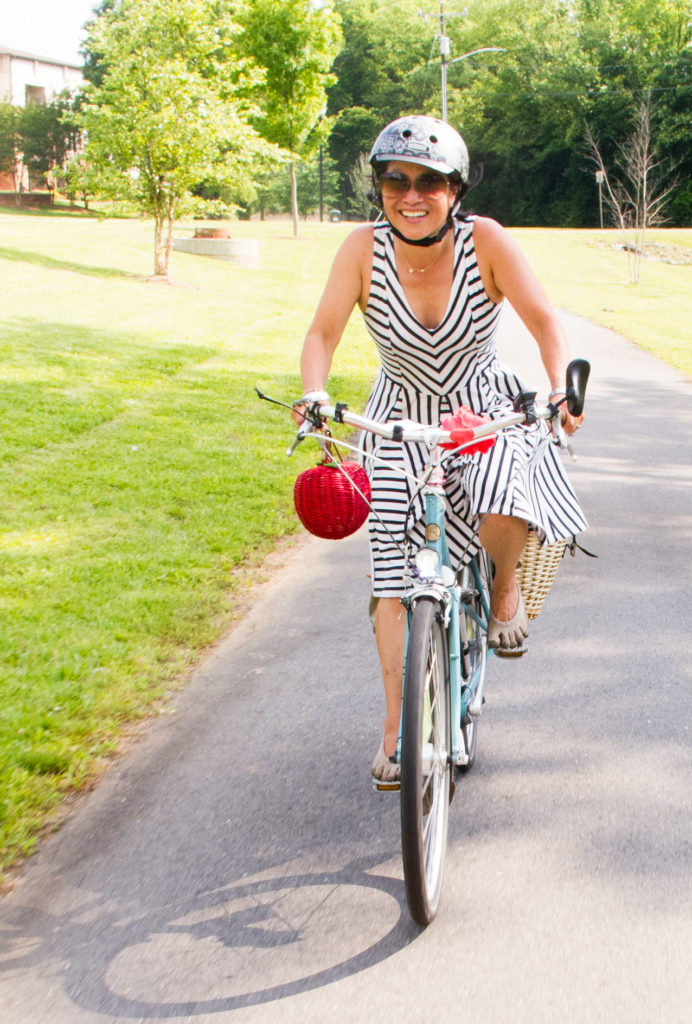On Tuesday I did my Tour of Oakland bike ride, and one of the impressions I came away with is that East Oakland, especially Deep East, has been less affected by the shelter-in-place order than the rest of the city.
My street, Piedmont Avenue, is a weird mix of polite society and zombie apocalypse, with half of the businesses shut down and the other half trying to work within the rules to stay open; the same is true in Oakland’s other affluent shopping districts. Deep East isn’t a shopping district. It’s pretty disconnected from the global economy, which means that with the global economy shut down, it’s a lot closer to business as usual than my neighborhood is. People are in their yards talking to friends and neighbors. The taco trucks are out, the ice pop cart guys are ringing their little bells, the roadside fruit stands are still there. Much of the economy of East Oakland is informal, so shutting down the formal economy doesn’t hit the neighborhood as hard. I saw a few of the Scraper Bike Team kids out, too.

Then on Wednesday the SF Chronicle published a surprisingly good front-page article on East Oakland’s response to coronavirus. (Surprising because the Chronicle doesn’t report much on Oakland, and almost never on East Oakland outside of shootings and sideshows.)
I’m currently reading and enjoying Zach Norris’ book, We Keep Us Safe, which calls on us to de-emphasize top-down models of safety provided by government agencies and policing (a model he calls, “I Keep Us Safe”), and encourage communities to care for themselves. Especially for low-income communities of color, which the government historically doesn’t care for. (That’s why we call those communities “disadvantaged.” Because we disadvantaged them.) It connects with my experience on Tuesday and with the Chronicle article, so I wanted to highlight a few points from the article:
…[T]urning a profit during trying times isn’t what’s on the mind of Shop Rite owner Ali Albasiery. “I know these people, so when they come in and they have $30 worth of items that they really need, but they only have $19 to pay, I’ll do what I can for them because I know times are hard,” Albasiery said. “I’m giving out maybe $200 to $300 per day to people who don’t have enough. What’s more important than a profit is making sure everyone has what they need.”
Faye Algazzali…said her grocery store has an obligation to provide for residents, even if it means a greater chance of exposing herself to the coronavirus. We know a lot of our customers don’t have the means to get around the city to other areas to shop, so they need us,” she said. “There’s a kind of selflessness to all of this, maybe, but it’s more just us doing what we always do. East Oakland people take care of each other.”
The partnership among residents, churches and community organizations keeps East Oaklanders hopeful, said Carolyn Jackson, the executive director of Black Cultural Zone Collaborative, a group of residents, government agencies, churches and grassroots groups that work to help keep black people in East Oakland.
“I’m seeing resilience,” she said. “Just knowing that we are in this together. I’m born and raised in East Oakland, it’s always been that way and I’m just glad to see it’s still there.”
There has been some research that marginalized communities connect to the notion of “resilience” more than to the notion of “sustainability”. Sustainability doesn’t seem like a priority when you’re living paycheck to paycheck, but the East Oakland community has a long history of resilience, mostly because people there feel a responsibility to take care of each other. They’ve had to.
A taco truck is an incredibly resilient business. Inexpensive, easy-to-procure ingredients, and you can drive it to anywhere it’s needed. As long as you have gas, propane and tortillas you can serve the community. Two months ago we didn’t even know that social distancing was a thing, but it turns out that in the coronavirus era, a taco truck is maybe the best place to get lunch. And all of the best taco trucks are in East Oakland.
I have one criticism of the Chronicle article, which is a side comment made when referencing the International Boulevard BRT project:
The opening of a new $216 million bus and rapid transit system along International Boulevard, which could revitalize the area, is delayed until the end of April.
“Revitalize” is a loaded word. This area is already vital—look at all of the amazing music and visual art which has come out of East Oakland, and all of the above quotes from residents and business owners who are coming together to help each other through a tough time. East Oakland is more vital than Piedmont Avenue, which is kind of a dead place when retail isn’t happening. “Revitalize,” as used here, is code for “encourage New Urbanist retail and housing development.”
The residents of East Oakland are suffering from a lot of deprivations, but I’m pretty sure they’re not suffering from a lack of hipster coffee shops and beer gardens. If we are going to reinvest in the neighborhood, we should do it in a way that respects the culture of care which has protected and nurtured the neighborhood for generations.


